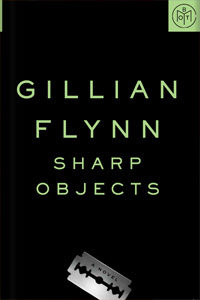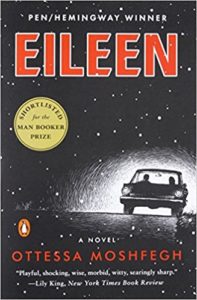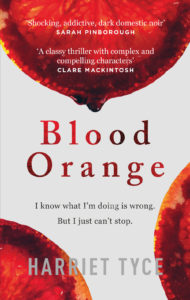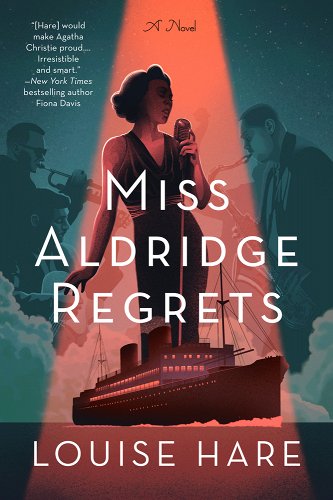I’ve long had a love for an unconventional woman, perhaps because I consider myself to be one. I blame my mother. Growing up, I stole her books as soon as she finished with them. I immersed myself in the world of the female PI, fascinated by these independent women who didn’t need husbands and refused to give up the job they loved, even at the risk of their finances or lives. I’ve never had the aspiration to follow in their footsteps exactly, but I’ve always wanted to create characters like them; women who don’t always follow the rules of society.
Lena Aldridge started off as an unnamed woman in my first novel, This Lovely City, published in the UK. My protagonists, a couple named Evie and Lawrie, have a night out in a Soho jazz club. As they leave, there is a woman singing onstage and something about her makes Evie take notice. It’s not on the page, but Evie is going through a turbulent time and when she sees that woman onstage, confident and talented, she feels envious. That singer must really have her life together! I don’t really know why but that unnamed woman stuck in my head. I wondered if she really did have her life together – how boring! What if, really, she was falling apart? Way more interesting.

Indemnity Only, by Sara Paretsky
My introduction to the unconventional woman was through Indemnity Only, Sara Paretsky’s first V.I. Warshawski novel. A missing person’s case turns into a murder investigation, but it’s V.I. herself who kept me turning the pages when I first picked this up. The divorced daughter of a Chicago cop and an Italian opera singer, V.I. is so fiercely independent and I’d never come across anyone like her before, either in real life or in fiction.

Sue Grafton’s Kinsey Millhone Alphabet Series
Once I’d devoured the V.I. novels that were available, I moved onto Sue Grafton’s Kinsey Millhone Alphabet series, of course starting with “A” is for Alibi. Santa Teresa might be a fictional town in Southern California, but it felt real when I read these books. What Millhone has in common with Warshawski is that they’re a similar age. The difference is that Sue Grafton, perhaps having had twenty-six books in mind originally, decided to keep the action firmly in the 1980s, with the plot of each book taking place soon after the conclusion of the last. Although she’s described as a loner, she has a lot of friends, her octogenarian landlord Henry being my favourite. And she’s not averse to a romantic relationship, enjoying several over the course of the series as well as having been divorced twice. Kinsey Millhone is perhaps my favourite of the trio of female PIs that I read over a short period in my early teens (Linda Barnes’s Carlotta Carlyle being the third).

Sharp Objects, by Gillian Flynn
If the twentieth century was rich hunting ground for female PIs, the twenty first has opened up new horizons. Back in 2012, everyone was reading Gillian Flynn’s Gone Girl but, while Amy Dunne is definitely a complicated woman (the ‘cool girl’ monologue is famous for a reason), it’s Flynn’s debut, Sharp Objects that really brings women to the fore. Camille Preaker is a Chicago based journalist with a dark past who ends up travelling back to her hometown to cover the murder of a young girl. The murder and subsequent disappearance of another girl almost take a backseat to the tension between Camille, her estranged mother and her teenage half-sister. To say this book is dark would be an understatement.

Eileen, by Ottessa Moshfegh
Talking of dark books, the titular character of Ottessa Moshfegh’s Eileen is trapped between her squalid home life looking after an alcoholic father, and her dull job as the secretary at a boys’ prison. When the charismatic new counsellor, Rebecca, arrives at the prison, Eileen throws herself at this chance at friendship. This is a novel reminiscent of Patricia Highsmith and Shirley Jackson, a thriller with the literary chops to be shortlisted for the Booker Prize in 2016.

Blood Orange, by Harriet Tyce
The psychological thriller is often seen as female dominated, but that doesn’t necessarily guarantee an interesting female lead. One of my favourites of recent years is Blood Orange by Harriet Tyce. Alison is a successful criminal barrister with a loving husband and daughter, and she’s just been given her first murder case to defend – so why is she so hellbent on destroying it all? Drinking too much, having an affair with a colleague who doesn’t have her best interests at heart, her life is on the verge of falling apart. Can she save her client and, more importantly, can she save herself?

The Eighth Girl, by Maxine Mei Fung Chung
Alexa Wú is the protagonist of The Eighth Girl, a clever, original thriller. Author Maxine Mei Fung Chung is herself a psychoanalyst and leans on her expertise to draw a striking portrait of a young woman with dissociative identity disorder. When Alexa’s best friend starts working at a high-end gentlemen’s club, it is Alexa too who gets sucked into the dark side of London’s nightlife. Will her multiple personalities help or hinder her as she tries to save them both?

Precious You, by Helen Monks Takhar
If you want two unconventional women for the price of one, Helen Monks Takhar delivers with Precious You. Katherine is editor in chief at a magazine, in a happy relationship and in her early forties. Lily is the new intern, relative of the magazine’s publisher, who walks in and seems determined to undermine Katherine at every opportunity. Is Katherine just being paranoid and jealous of a younger woman? Is Lily really out to get Katherine’s job? Or are they just as bad as one another? Trust me, this book goes to DARK places!
***
While Lena in Miss Aldridge Regrets isn’t quite as messy as some of the women I’ve mentioned, she’s living a life that would definitely be described as unconventional, especially in the 1930s. I had a lot of fun writing her, and the other women she finds herself in company with, many of whom are just as complicated beneath the surface. And perhaps complicated is the wrong word to use here. Maybe the word I should be using is real.


















